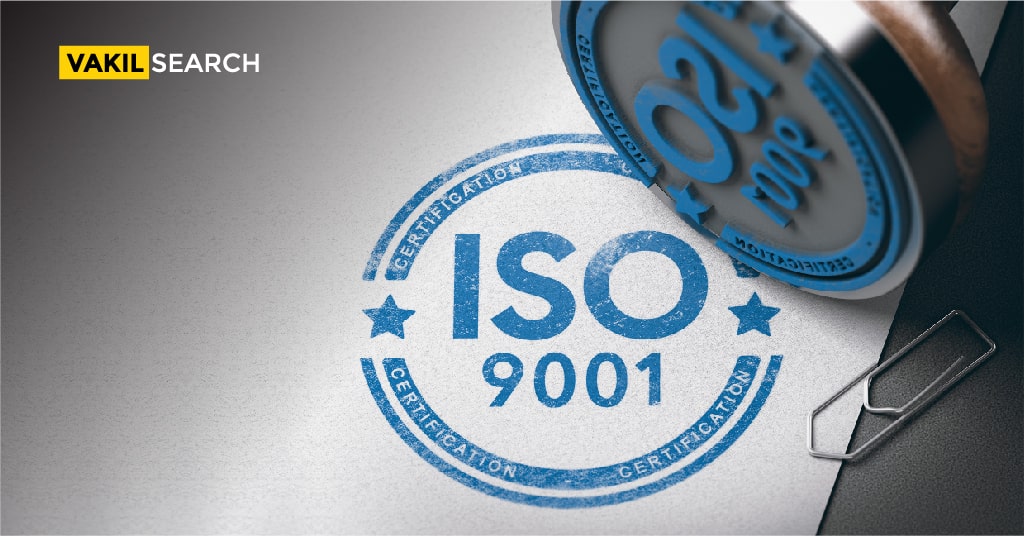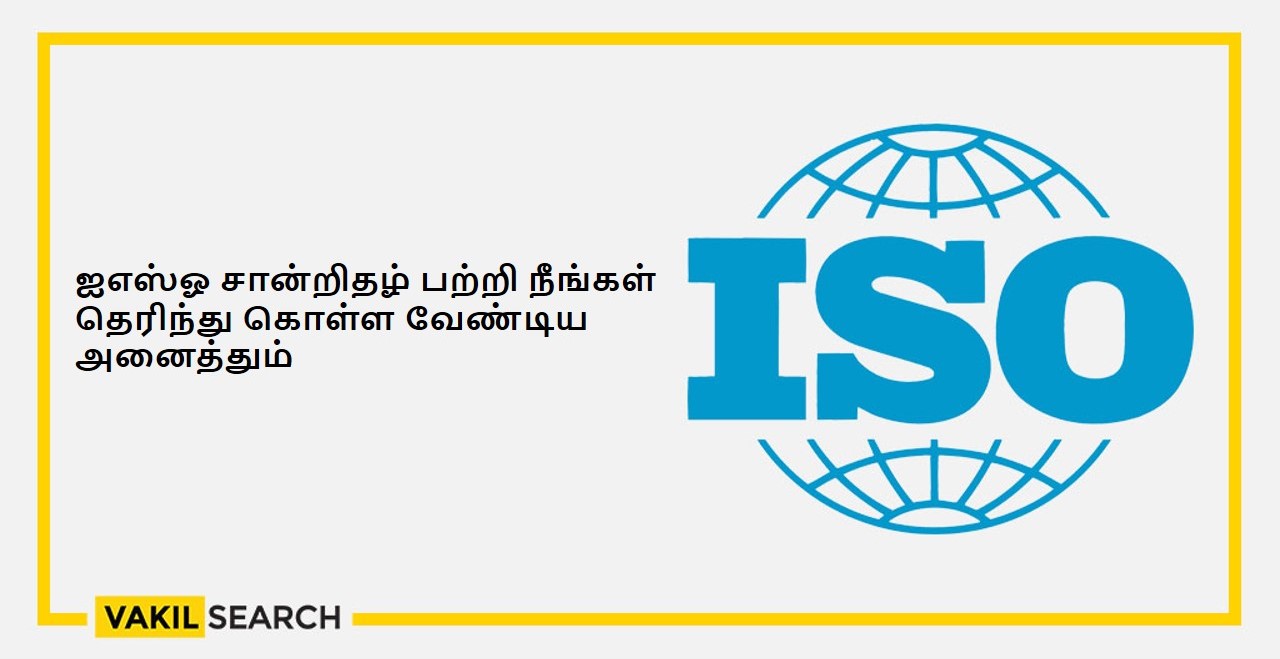In this article, we shall take a look at what is the ISO 9001 certification and how a company can receive the certification
Introduction
ISO 9001 is an international standard established to set a certain bar with regards to clean and professional business practices. It is a certifying authority which can certify a company as following the highest standards of operations in its business right from maintenance of equipment, safety measures for its employees and strong corporate governance. It is important for all companies to have a strategic plan to meet the quality principles and guidelines that are essential for efficient business practice. Having an ISO 901 certification adds a certain weightage to the company’s brand when it comes to competition.
ISO 9001 standard is much more than a standard and should be a part of every company’s strategic plan rather than just a certification. The guidelines and quality principles in ISO 9001 certification are essential for good business practices.
All the companies strive to increase their efficiency, customer satisfaction and profitability but all of them rarely think about the standard and rarely tap into the real power of ISO 9001.
What Is ISO 9001?
The value of ISO 9001 Certification has been subject to a great debate in recent years. Organisations that continue to debate rather than take action are registered to the prospect of poor business growth and being incapable of competing with organisations that have moved beyond debating the topic.
One of the most important benefits of this standard is the principle of employing the process which is the approach to management. Achieving the ISO 9001 standards results in a reduction in waste, enhanced quality, productivity, improved attention to detail and also improved standards of health and safety performance. Thus ISO 9001 should be thought of as a business management tool for the organisation to drive and understand the real value and results.
Process Of ISO 9001 Certification
ISO 9001 is a complete guide that is meant to be used as a business tool by the management which is of great benefit to the management, ultimately resulting in the profitability of the company. It is necessary that every employee in the organisation should have a basic understanding of how the organisation functions, about the revenues, the flow of cash, the various processes followed. Without knowing these aspects of business, it will be difficult for the management to diagnose and solve problems. This process identification involves four principles.
- Understanding and meeting requirements
- Considering the process in the terms of added value
- Obtaining the result of the process and the effectiveness
- Continual improvement of processes on the measurement of the objectives.
Meeting The Requirements Of ISO 9001
Most of the problems in the organisation occur due to minimal knowledge about the ISO 9001 requirements and it often results in the underperformance of the employees as they are not aware of what their job requires which results in the dissatisfaction of the customers. Understanding the requirements is the responsibility of both the parties involved. Both the employees and the customers must be educated on the standard requirements.
Documents Required For ISO 9001 Certification
The following are the documents that need to be submitted to the certifying authorities when applying for the ISO 9001 certification:
- Company profile
- Company letterhead
- Copy of a sales and purchase bill
- Proof of company’s registered address
- Company PAN card
- Company Visiting card
Processes In Terms Of Added Value
The organisation should add value internally and externally, all through the way starting from capturing the customer requirements till the final delivery.
This will become possible only when the ISO 9001 is seen as a quality management tool and not as a marketing tool to attract customers. This process helps in the transformation of the raw materials into the desired output. Without the proper utilisation of the ISO 9001, the organisation will fail to add value when the output of the process is delivered.
New Standard
The ISO 9001 latest version was published in 2015 and all the organisations having ISO 9001: 2008 certification were required to update themselves in accordance to the 2015 standard. If not, the certification is void.
The important amendment made in the year 2015 was in the Annex SL. It had a gap analysis performed to identify any potential nonconformities so that they can be addressed to the standards of the certification audit. It includes the concept of risk-based thinking, new leadership requirements etc.
The audit process is both internal and external. Audits are the key component for becoming ISO certification.
On-Site Audits
These are performed in full days, the number of days depends upon various factors like the size, complexity, nature of the organisation.
Remote Audits
This is done via web meetings, teleconferencing or electronic verification of process but this type is not very common
A certification audit is an audit where the selected registrar will conduct an inspection to verify conformity to the ISO 9001 certification standards. The auditor will interview the staff, and also review the documented information to make sure all ISO 9001 requirements are fulfilled.
Requirements
Some of the documents required are the quality manual, policy, objectives and records and it also includes the six procedures which are control of documents, records, internal audit, control of non-conforming product, corrective and preventive action
Result
A company needs to understand its processes in order to monitor its performance and to assess effectiveness. A quality management system should be a strategic part of the overall business plan, so it’s important to determine if the process is assisting the organisation of why the process was initially created.
Continuous Improvement Based On Objective Measurement
Many organisations may not reach their full potential and remain stagnant and the reason being is that they don’t have a mechanism to drive continual improvement. They simply run by tackling the surface issues, putting up with firesand responding to day to day problems rather than addressing the process performance issues based on objective measures. This is the main reason as to why the small and medium-sized companies remain in the same level and the large companies don’t achieve the maximum profitability. ISO 9001 provides objective measures to continually drive improvement.
Who Should Use The ISO 9001:2015 Revision?
ISO 9001:2015 is apt for organisations of any size and industry. Over one million organisations across more than 160 countries have implemented the ISO 9001 standard to enhance their quality management systems. Entities of varying types and scales have discovered that adopting aids them in:
- Streamlining their processes
- Enhancing process efficiency
- Sustaining continuous improvement.
All organisations currently using ISO 9001 are strongly advised to migrate to ISO 9001:2015 promptly. This recommendation extends not only to organisations certified under ISO 9001:2008 but also to those involved in training or certifying others
Effective 14 September 2018, organisations previously registered under ISO 9001:2008 should have made the transition to the 2015 standard. Detailed guidance on making the transition from ISO 9001:2008 to ISO 9001:2015 can be obtained from the International Accreditation Forum (IAF).
What Are The Benefits Of ISO 9001?
ISO 9001 plays a crucial role in ensuring that organisations consistently deliver top-quality products and services to their customers, leading to various advantages such as contented customers, effective management, and satisfied employees. This standard outlines the prerequisites for establishing a successful quality management system, helping organisations in several ways:
- Structuring a QMS
- Fostering satisfaction among customers, management, and employees
- Continuously enhancing their operational processes
- Achieving cost savings.
For instance, take the Clark County School District in Nevada harnessed ISO 9001 to realise
$174 million in cost savings and cost avoidance over a decade. They accomplished this by training more than 3,000 employees in the standard, emphasising the pivotal components of training, communication, respect, and operational efficiency.
Conclusion
ISO 9001 is a quality management system standard and should be used as a business management tool. Focusing on implementing this process approach will lead to a systematic method of identifying and controlling the process to ensure requirements are understood and met in an effort to add real value. Once the processes are mentioned through objective measurements, an organisation can focus on the actual cause of process performance issues.
This certificate should be used as an effective business management tool to ensure the company and its products adhere to this international standard. Once you understand the requirements of this quality standard, you will be able to make an effort to add value to your products and services.
Also Read,









